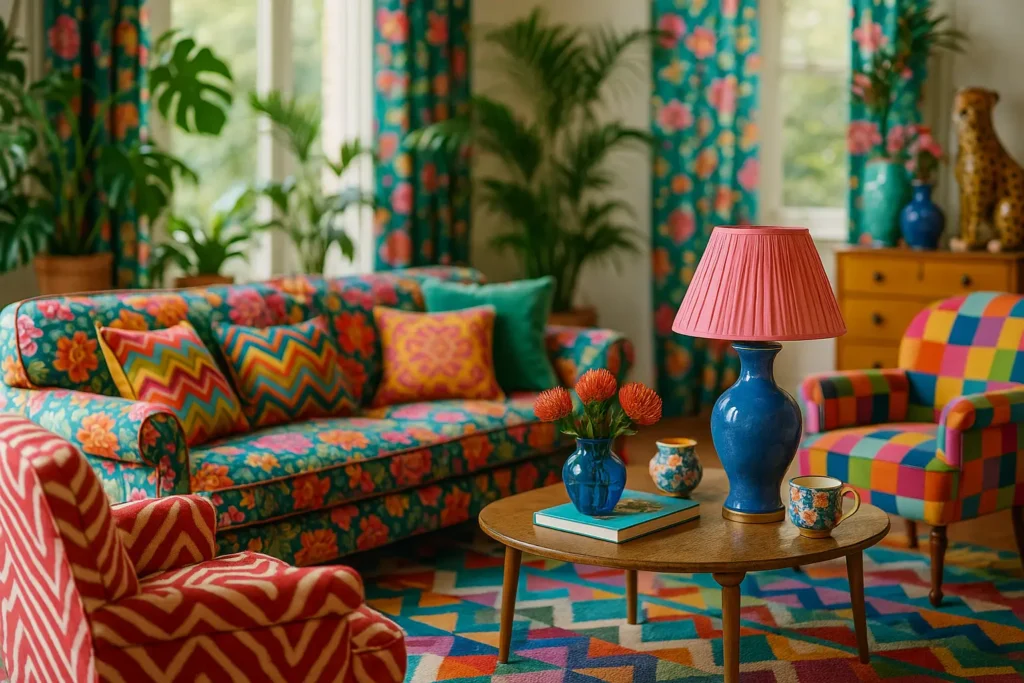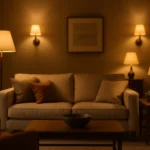In recent years, we have witnessed an intriguing shift in the world of design and interior decor. The clean lines and muted tones of minimalism have been gently nudged aside by the vibrant, eclectic world of maximalism. As we explore this shift, we find ourselves questioning: Is maximalism the new minimalism?
In a world where personal expression is celebrated more than ever, this style champions individuality and creativity, painting a fascinating landscape of color and patterns. Join us as we delve into the intricate tapestry of maximalist art, its influences, and why it resonates with so many of us today.
Maximalism: A Celebration of Individuality
In the heart of maximalism lies a profound celebration of individuality. Where minimalism found beauty in restraint, maximalism thrives in abundance. It’s about filling our rooms with the things we love, creating spaces that reflect our unique personalities and passions.
The maximalist design ethos is not about chaos; it’s an intentional embrace of the eclectic. People often describe this style as a collection of memories, stories, and experiences. We see this reflected in the way spaces are curated, with each element—be it a vibrant piece of art or a bold piece of furniture—chosen for its story and significance.
Maximalism is for those who see beauty in diversity. It’s about layering colors and patterns, mixing modern with vintage, and finding harmony in contrast. This style is a testament to the richness of life, allowing us to experience an array of emotions and create an atmosphere that is both welcoming and invigorating.
This deep dive into maximalism isn’t just about aesthetics; it’s about emotion. We feel more connected to spaces that reflect our true selves, and maximalism offers us that connection. By surrounding ourselves with cherished items, we create a sanctuary that is uniquely our own.
The Evolution of Minimalism and Maximalism
To understand why maximalism is gaining momentum, we must first examine its roots. In the 1960s and 70s, minimalism emerged as a response to the chaos of the modern world. It offered simplicity and austerity, stripping away excess to focus on essential elements.
Yet, as time progressed, people began to crave a return to the personal and the expressive. Enter maximalism, a style reminiscent of the Victorian era, where opulence reigned supreme. This design trend quickly gained traction, echoing the desires of those seeking to break free from the confines of minimalism.
The transition from minimalism to maximalism reflects broader societal changes. Our fast-paced, digitally-connected world beckons for spaces that provide comfort and warmth. The maximalist approach, with its bold colors and intricate patterns, offers a reprieve from the sterile environments that minimalism can sometimes create.
Moreover, the rise of social media platforms like Instagram and Pinterest has amplified the maximalist wave. Now, more than ever, people are inspired to push boundaries, create, and share their personal spaces. These platforms celebrate diversity in style, encouraging us to embrace our individuality and showcase our unique furniture and decor choices.
As we navigate this evolution, it’s essential to remember that neither style is superior. Instead, they offer different experiences and expressions, catering to various tastes and lifestyles.
How to Embrace Maximalism in Your Space
For those ready to dive into the world of maximalism, the journey can be as exciting as the destination. This style encourages us to create spaces that are true reflections of our personality, inviting colors, textures, and patterns to dance in harmony.
-
Start with What You Love: Begin by identifying things that bring you joy. Whether it’s an array of books, eclectic art pieces, or a collection of furniture that tells a story, let these be your foundation.
-
Mix and Match: Maximalism is all about blending the old with the new. Combine vintage finds with contemporary pieces, and don’t shy away from bold contrasts.
-
Play with Color: Don’t be afraid to experiment with bold colors. Revisit the color wheel and explore combinations that speak to you, from deep jewel tones to vibrant pastels.
-
Layer Textures and Patterns: Introduce different textures and patterns through textiles, wallpapers, and decor. This adds depth and interest to your space.
-
Curate with Purpose: While maximalism embraces abundance, it doesn’t mean clutter. Curate your space thoughtfully, ensuring each item has a place and purpose.
Remember, maximalism is about personal expression. It’s about curating a space that speaks to you and brings you comfort. Let your love for art and design guide you in creating a maximalist haven that is uniquely yours.
As we weave through the intricate landscape of interior design, it’s clear that maximalism offers a fresh perspective in today’s modern world. It challenges us to celebrate the colors and stories that make us who we are, breathing life into our spaces with every choice.
Maximalism isn’t just a trend; it’s an invitation to rediscover our passion for individuality and creativity. As we embrace this style, we find ourselves at the crossroads of the past and the present, forging a path that is as diverse and dynamic as the world we live in.
In this new dawn of interior design, maximalism stands as a testament to the power of personal expression. It’s a vibrant tapestry woven with love, courage, and a celebration of the beauty found in every corner of our lives. Let us cherish this movement, embracing its boldness and reveling in the joy it brings to our everyday experience.
FAQ
What is maximalism, and how does it differ from minimalism?
Maximalism is an aesthetic style that embraces boldness, complexity, and a diverse range of elements. Unlike minimalism, which focuses on simplicity and the essence of ‘less is more,’ maximalism thrives on ‘more is more,’ incorporating rich textures, vibrant colors, and a mix of patterns and styles.
Why is maximalism gaining popularity in recent years?
Maximalism has gained popularity due to a growing desire for personal expression and individuality. People are increasingly looking to create spaces that reflect their unique personalities, interests, and experiences, leading to a shift away from the uniformity of minimalism.
Can maximalism still be considered a form of organized chaos?
Yes, maximalism can be seen as organized chaos. While it incorporates a variety of elements, the key to successful maximalism is thoughtful curation and arrangement. This ensures that even with an abundance of items and colors, there is harmony and a clear sense of intentionality.
Is maximalism suitable for everyone, or does it require a specific personality type?
Maximalism can appeal to anyone who appreciates layers of visual interest and has a penchant for collecting and displaying items. While it may resonate more with those who enjoy bold and eclectic designs, anyone can adopt maximalist principles by incorporating elements they love and feel connected to.
How can someone transition from a minimalist to a maximalist style without overwhelming their space?
To transition from minimalism to maximalism, start by gradually introducing more colors, textures, and patterns into your space. Focus on layering with items you cherish or have personal meaning. Ensure balance by clustering similar items together and maintaining a cohesive color palette to avoid creating a cluttered appearance.



